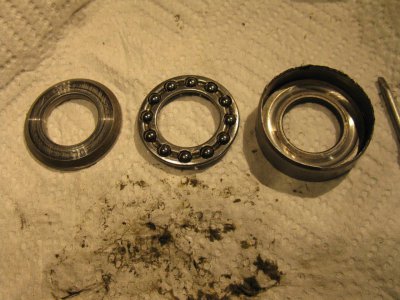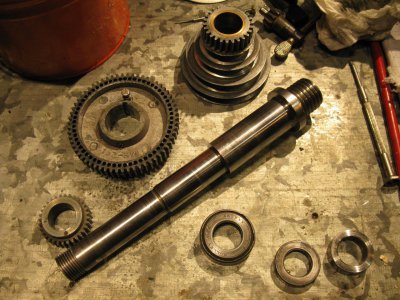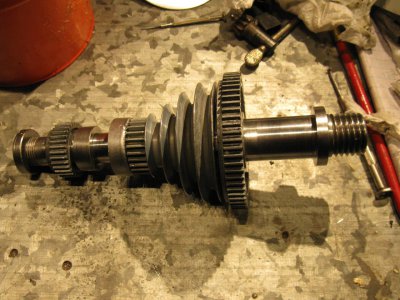- Joined
- Sep 28, 2013
- Messages
- 4,395
I'm now the new happy owner of a slightly grungy Craftsman 101.07301 (sleeve bearing) lathe. See here for the story: http://www.hobby-machinist.com/show...-HOME-Sears-101-07301-6x18-Lathe-Sandy-Oregon
Mechanically it appears to be in excellent shape so the main task is to strip it down, clean it and adjust it so that it's running well. While I'm in there I might as well repaint it as the paint is only partly present.
I don't have any pictures yet, but the 3 jaw chuck is off, the drill chuck is out and last night I successfully removed the spindle. Only very light (to the touch) scoring on the spindle and nothing major in the bearings other than a couple of dings where a previous owner was unaware of the woodruff keys in the spindle. Pulley bearings are in great shape and the thrust bearing seems ok. Started cleaning the grunge off the bull gear last night, but it's hard going.
Question - what chemicals are safe to work with on zamac and bronze? Steel stuff I throw into some NaOH and the gunk just falls off, but I wasn't sure about the pulleys. I have some purple power, which helps, but there's a lot of scrubbing and scraping needed. Is WD40 worth trying?
Things on the list this week:
finish cleaning the spindle and parts so I can put them to one side
take apart the motor and see if I can find the reason why it needs a spin to start
inventory the gears on the gear train to see what's there (and what feeds/ threads I can cut)
Longer list:
Take apart and clean the 3 jaw
Take apart and clean the drill chuck (a Jacobs 33 1/2 cap!)
This will most likely take me a lot of time as I don't have much spare time with preparing for classes, but it will be nice to chip away at it whenever I can.
Any recommendations for paint? I was thinking of a silver or grey Rustoleum hammered finish, I think you can get primer+paint in one can. Something simple but ideally effective and inexpensive I'm not much of a "how a tool looks" kinda person, but it's a good way to stop it rusting!
I'm not much of a "how a tool looks" kinda person, but it's a good way to stop it rusting!
Mechanically it appears to be in excellent shape so the main task is to strip it down, clean it and adjust it so that it's running well. While I'm in there I might as well repaint it as the paint is only partly present.
I don't have any pictures yet, but the 3 jaw chuck is off, the drill chuck is out and last night I successfully removed the spindle. Only very light (to the touch) scoring on the spindle and nothing major in the bearings other than a couple of dings where a previous owner was unaware of the woodruff keys in the spindle. Pulley bearings are in great shape and the thrust bearing seems ok. Started cleaning the grunge off the bull gear last night, but it's hard going.
Question - what chemicals are safe to work with on zamac and bronze? Steel stuff I throw into some NaOH and the gunk just falls off, but I wasn't sure about the pulleys. I have some purple power, which helps, but there's a lot of scrubbing and scraping needed. Is WD40 worth trying?
Things on the list this week:
finish cleaning the spindle and parts so I can put them to one side
take apart the motor and see if I can find the reason why it needs a spin to start
inventory the gears on the gear train to see what's there (and what feeds/ threads I can cut)
Longer list:
Take apart and clean the 3 jaw
Take apart and clean the drill chuck (a Jacobs 33 1/2 cap!)
This will most likely take me a lot of time as I don't have much spare time with preparing for classes, but it will be nice to chip away at it whenever I can.
Any recommendations for paint? I was thinking of a silver or grey Rustoleum hammered finish, I think you can get primer+paint in one can. Something simple but ideally effective and inexpensive



